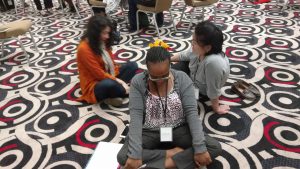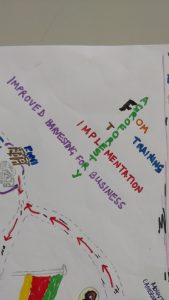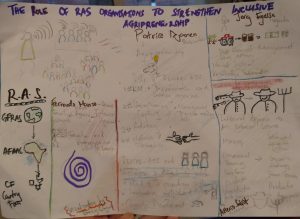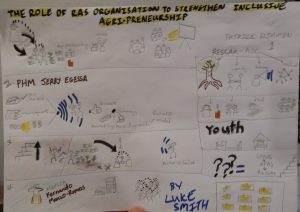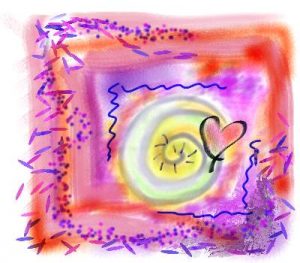 When approached to support knowledge management (KM) in my consulting practice, I often reply “I don’t believe in KM!” This flippant but heartfelt comment reflects the failures I’ve observed as people tried to reduce the complex processes of learning, creating, sharing and applying knowledge into a set of “best practices” and databases. It was as if KM was a mechanical but glorified tool, like a fancy food processor, admired while new, and then left on the shelf. Most KM approaches failed to understand that at the heart of creating, sharing, adapting knowledge is embedded in our entrained human behaviors and rarely successfully redirected by rules. Especially for busy people. Yes, I am a skeptic of of many KM approaches.
When approached to support knowledge management (KM) in my consulting practice, I often reply “I don’t believe in KM!” This flippant but heartfelt comment reflects the failures I’ve observed as people tried to reduce the complex processes of learning, creating, sharing and applying knowledge into a set of “best practices” and databases. It was as if KM was a mechanical but glorified tool, like a fancy food processor, admired while new, and then left on the shelf. Most KM approaches failed to understand that at the heart of creating, sharing, adapting knowledge is embedded in our entrained human behaviors and rarely successfully redirected by rules. Especially for busy people. Yes, I am a skeptic of of many KM approaches.
So when Paul Corney and Patricia Eng invited me to take a look at their new book, “Navigating the Mindfield: A Practical KM Companion,” I had a glimmer of hope. Why? I have interacted online with Paul for many years via the global community of practice on KM in international development, KM4Dev, and have found him sensible and practical, while also pushing and looking forward. Those are all good indicators of a viable KM approach.
Eng and Corney’s book is at first a somewhat basic and “obvious” book. It ticks the check marks around understanding what KM is and it’s diverse value proposition. It is a GREAT introductory text for someone who has just been handed a KM responsibility. It is filled with common sense, which we know from experience isn’t always so common. Usefully it is grounded with stories exemplifying the ideas provided: a real world check.
For me, as an “old hand,” the book sings in Chapter 7 – What Surprised Us. After analyzing all their interviews and research, Eng and Corney put their heads together to identify the surprises that ultimately spring from what they describe as KM being “all about people.” People are not orderly, obedient and prepared to live in the (fantasy) land of “best practices.” Their contexts are diverse and often complex. In describing these surprises, the authors sketch out the reality that KM is a complex practice and requires complexity appropriate strategies and adaptations. My favorite is #2, “Operational KM to the fore, strategic KM to the rear.” This is a classic polarity, a wicked question. How can we be both operational and strategic? Focus solely on an operational challenge, KM dies when that operational imperative ends. Strategic only and buy in at the front line rarely happens. KM, at its best, dances within these two polarities, rather than tries to resolve them.
The issue for me is to be always thinking forward about KM and how it can add value in ways the generatively move a system in the direction we want it to go. If we rely on a single model or framework, that task is impossible. So watch out for the trap!
If you are just starting out with KM, read the whole book and absorb the stories and lessons. If you are an old/jaded/in-a-rut practitioner, start with Chapter 7 and be prepared to discover lessons you probably already know, but haven’t applied. That darned old common sense isn’t always so common. So let’s start practicing it again. Let’s get more creative … or maybe that isn’t the word. Let’s use, for example, complexity frameworks to understand and expand what works and ditch the failing old plans. Maybe KM can be real!
